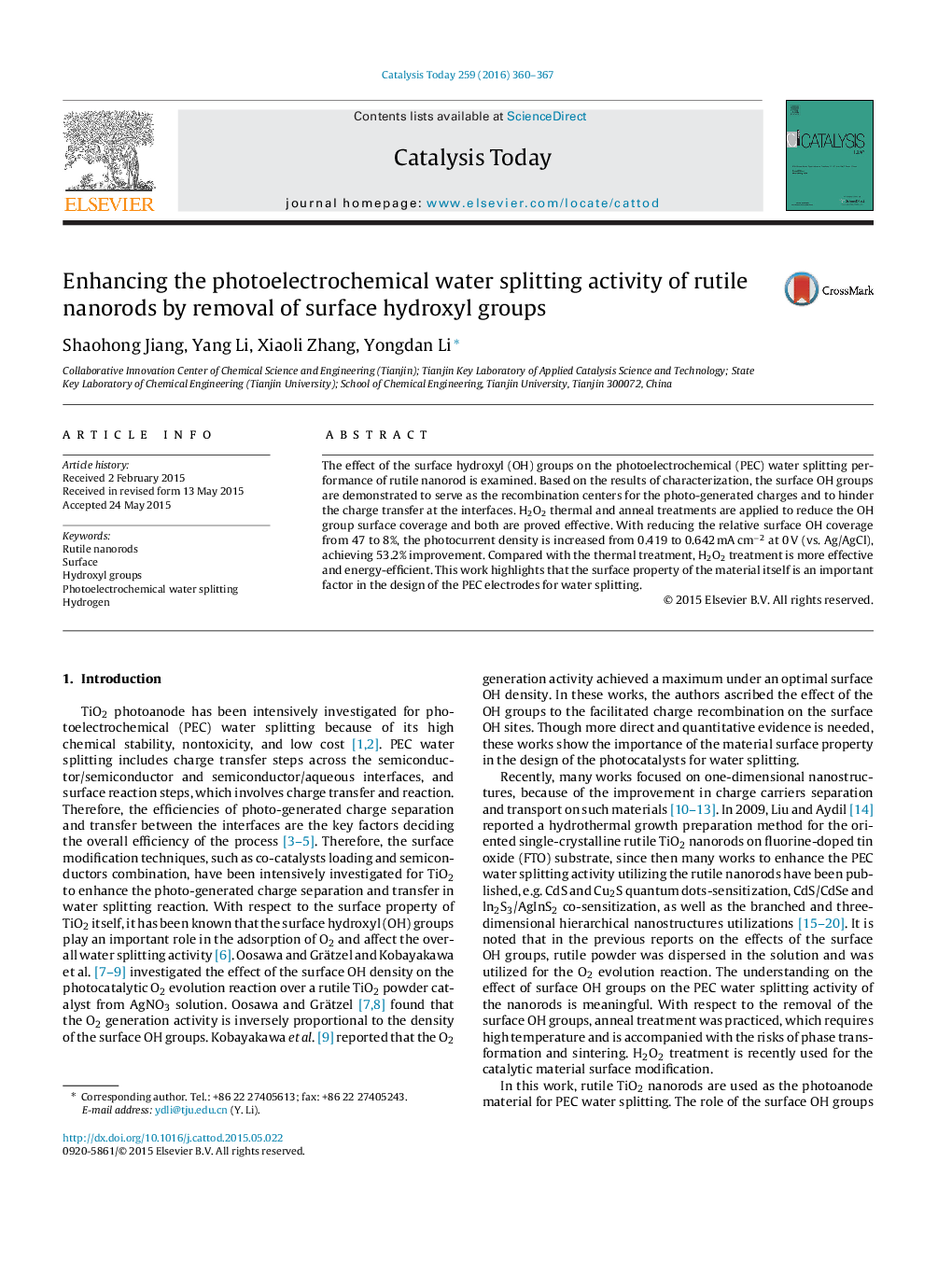| کد مقاله | کد نشریه | سال انتشار | مقاله انگلیسی | نسخه تمام متن |
|---|---|---|---|---|
| 53496 | 46972 | 2016 | 8 صفحه PDF | دانلود رایگان |
• Surface hydroxyl groups on rutile nanorods serve as the charge recombination centers.
• Surface hydroxyl groups hinder the transfer of photo-generated charges.
• Surface hydroxyl groups can be removed by annealing and H2O2 treatments.
• H2O2 treatment is more efficient than anneal treatment.
• Reducing the surface hydroxyl groups can improve the PEC water splitting activity.
The effect of the surface hydroxyl (OH) groups on the photoelectrochemical (PEC) water splitting performance of rutile nanorod is examined. Based on the results of characterization, the surface OH groups are demonstrated to serve as the recombination centers for the photo-generated charges and to hinder the charge transfer at the interfaces. H2O2 thermal and anneal treatments are applied to reduce the OH group surface coverage and both are proved effective. With reducing the relative surface OH coverage from 47 to 8%, the photocurrent density is increased from 0.419 to 0.642 mA cm−2 at 0 V (vs. Ag/AgCl), achieving 53.2% improvement. Compared with the thermal treatment, H2O2 treatment is more effective and energy-efficient. This work highlights that the surface property of the material itself is an important factor in the design of the PEC electrodes for water splitting.
Figure optionsDownload high-quality image (135 K)Download as PowerPoint slide
Journal: Catalysis Today - Volume 259, Part 2, 1 January 2016, Pages 360–367
